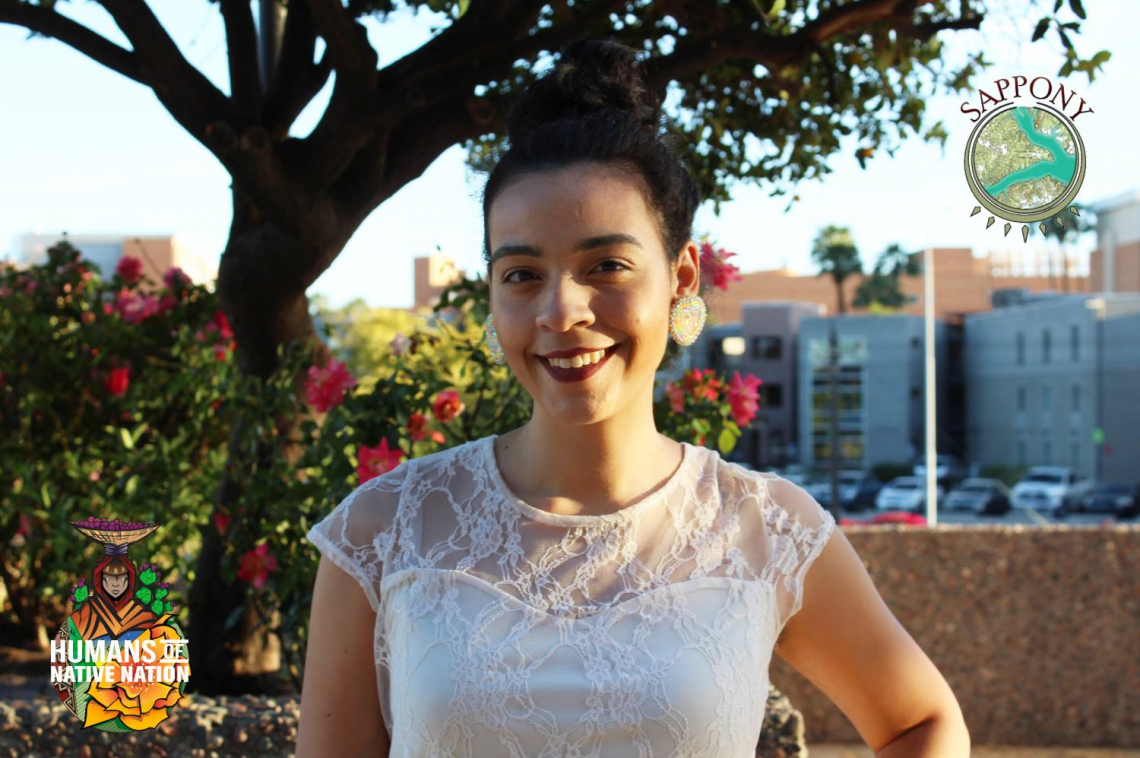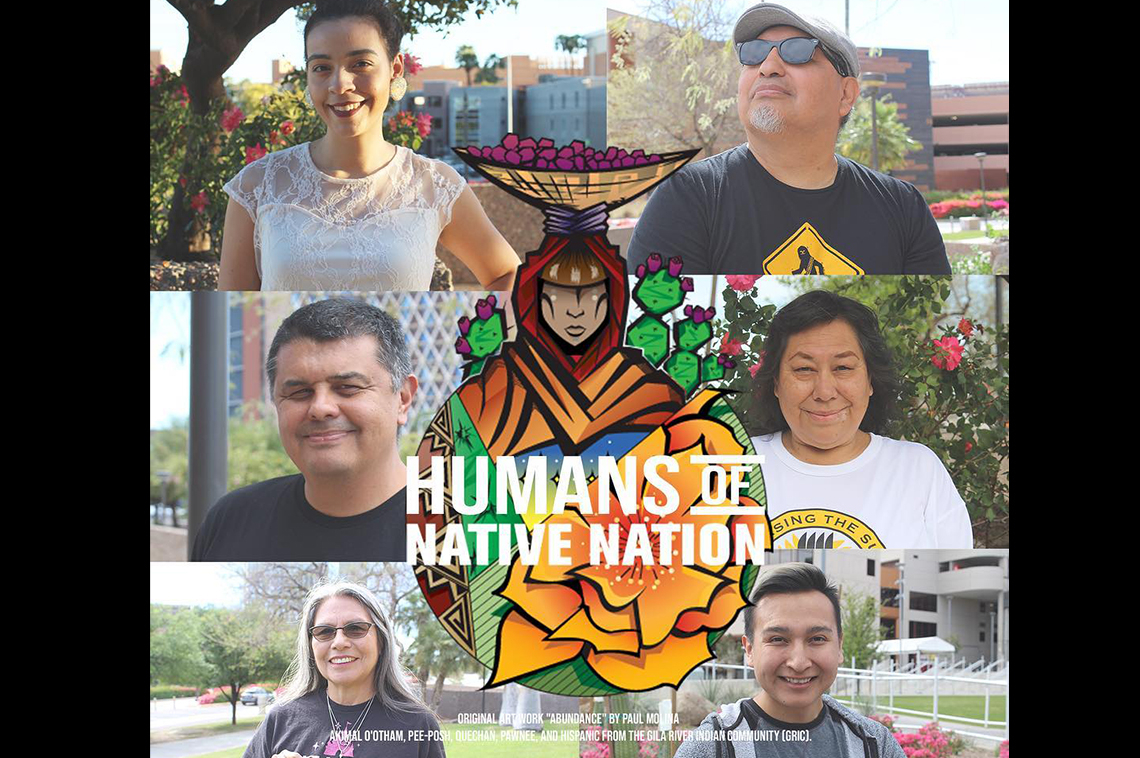

At the Creative Placemaking Leadership Summit in Los Angeles summit we were intrigued by a session which promised to teach us how to integrate the traditions and values of diverse indigenous communities into community-engaged artistic practice. It was run by Cornerstone Theater’s artistic director Michael Jon Garces and playwright Larissa FastHorse. Cornerstone’s newly evolved methodology was on display, as they taught us how the company developed and refined its process by working with Native American communities on indigenous land to create its current touring project, “Native Nation”.
In April, 2019, Cornerstone Theater Company partnered with ASU Gammage in Phoenix, Arizona, where they collaborated with the local indigenous communities to create an immersive outdoor space, a community performers fashion show, and booths with a cast of 400 people (and they still didn’t get everyone involved to wanted to be involved.) With over 30 nations represented the space was divided into four directions. North was about missing and murdered indigenous women. East was about water. South was about appreciation versus appropriation. West was about food sovereignty. They created cards to help navigate people through the stories. Larissa told us, “If you wanted to see the whole story you would have to come to the event four times. This is hard for a lot of white people to understand that they can’t get everything - for once.”
Native Nation allows audience members to engage with the actors, according to director Michael John Garces who said, “We’re hoping that we can change the audience/performer dynamic, so that we are not dictating to the audience what they have to experience, but they have freedom in what they experience. And at the same time, not put the characters onstage to be viewed by the audience, but really they’re interacting, changing our relationship to the story and immersing folks in the story.”
Written by Larissa FastHorse, Native Nation is an Indigenous theatrical experience with the original people of Arizona to see the world through their eyes. She said, “We are working on indigenous land making plays and community for and with and by the people who live there. The community is involved in and has final say on the script and they also decide where the play should be produced as it is usually site-specific. Sometimes the location is about where people want to see something activated or reactivated.
Native people have a history of being asked to be in service of art but we want art to be in service of the people. The disconnect here in California and elsewhere is that people are living on stolen land where they are told they do not exist. In a well-meaning federal law, you cannot sell Native goods if you are not Native, and could be fined $10,000 if you do. So far so good. But actual Native people FROM here are not allowed to sell their own goods because they were deemed ‘extinct’ in the 1950s. In light of this, as part of the play we opened a marketplace where people were legally allowed to sell their wares because it was within play. Natives artists have to make art to simply say we exist on our own land. This was an important thing to uncover, understand and act on for this community.”
How Do You Invite People to Join In?
Larissa said, "This process is very indigenous specific, and we are dealing with people who have 500 years of proof why they shouldn’t trust anyone. We don’t use the term ‘story circle’ as this can be problematic as some stories can only be told at certain times of the year by certain people, so we use the term ‘talking circles.’ Circles have centers and we always seek to decenter ourselves or any partners who are used to walking into the room with status and power. Our job is to listen and reflect back.
We never record anything although we have notetakers and we never take down names or attribute quotes to any person. We are aware we are on sovereign land, and I have a dual citizenship I am Lakota first and a US citizen afterwards. We ask permission and ask if people are interested in doing this with us. If people are not interested we will leave. We make an artistic promise that the people have veto over every word and every action. No one has had to use the power of veto with us yet thankfully, but they have felt confident to make changes to the process and the output.
When we work in indigenous communities we understand that in indigenous culture, you are either Native or you’re not. It’s a constant practice of decentering - every day you have to return trust. Every rehearsal, every meeting you need to re-earn it. No one cares about the thing you did last year or the amazing work you did two years ago. Each day you have to earn the trust in that room.
We are not there to be arbitrators: for example in California there are five tribes and one said they didn’t want to work with us, another said they would work with us but decided against it in the end although did allow their stories to be used in the resulting play with their permission. In Arizona there were arguments about the protocols of how a particular dance should be done. We brought in a Native elder from that place who specified how the dance should be done on this land. Everyone was okay with that. Our artists do not go into the middle of things. Whatever Nation we are in, we know that it is those people who have the final word.”
We make it our first order of business to find out about the artists are already in a place and what they are already doing. We start out with a blank slate, zero design and no script. Everything is informed by the community and it takes people a while to trust that we have a literally no agenda.
It is vital to have community partners as ambassadors because they get the people in the room, and tell everyone that they can trust us and the process we are proposing. We show up in whatever way the community wants us to. Once we were asked to come and winterize an elders house so we went and did that. Another time we were asked to bring winter clothes for the children on the reservation so we did that. Another time we were asked to feed people so we did. It’s all about building trust where none has existed for so long.”
- - -
View press related to the production here
Visit the photo and blog series #HumansofNativeNation, sharing stories of the cast members who help make up the local community and Native Nation here.
See photos and follow #nativenationaz and #nativenationctc here.





